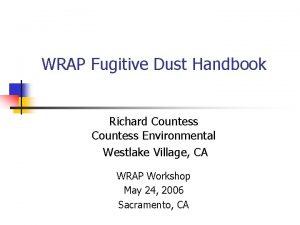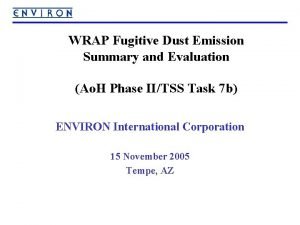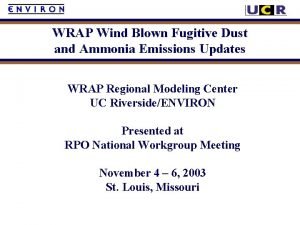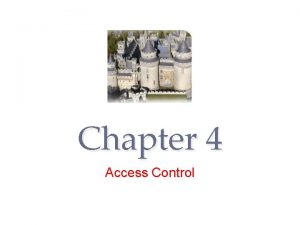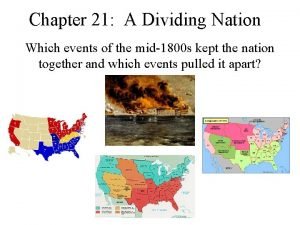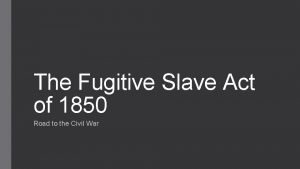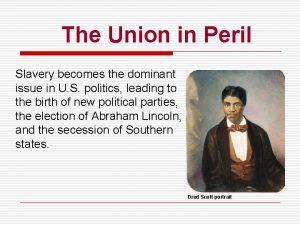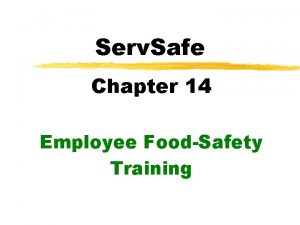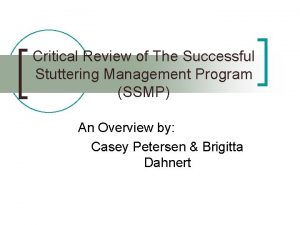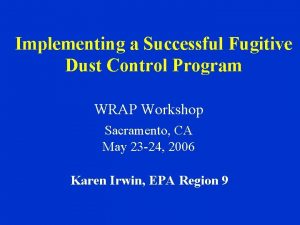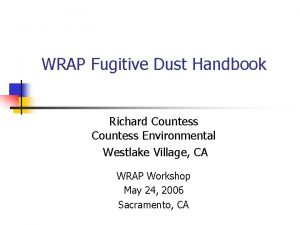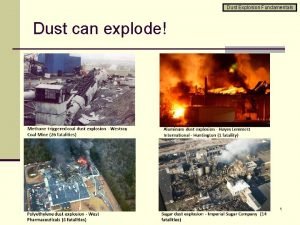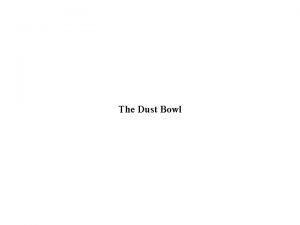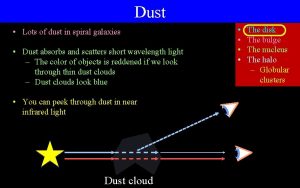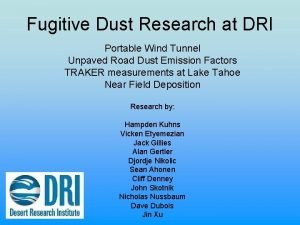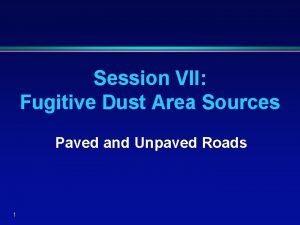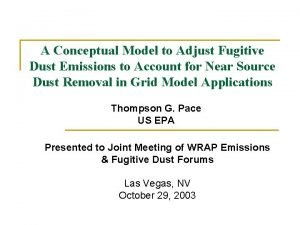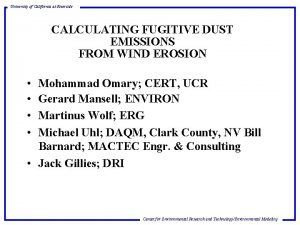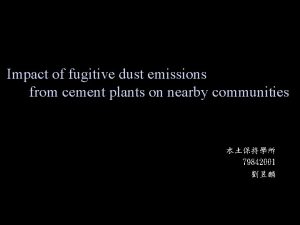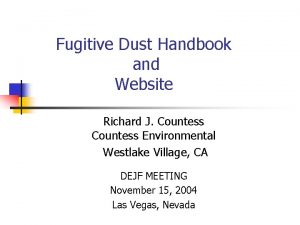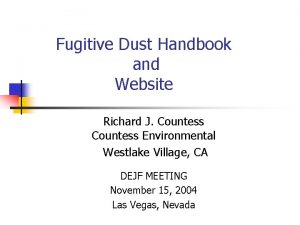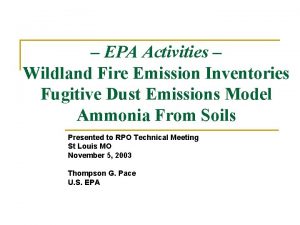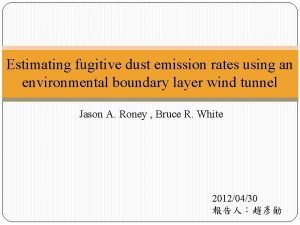Implementing a Successful Fugitive Dust Control Program WRAP





















- Slides: 21

Implementing a Successful Fugitive Dust Control Program WRAP Workshop Sacramento, CA May 23 -24, 2006 Karen Irwin, EPA Region 9

Overview • History of fugitive dust controls in Region 9 • Relevance to regional haze • Elements of an effective dust control program • Description of each element with examples • Recommendations

History of Fugitive Dust Controls in Region 9 • Fugitive dust sources dominate PM-10 in areas that do not meet federal standards • “Serious nonattainment areas” – Las Vegas, NV – Phoenix, AZ – Coachella Valley, CA – San Joaquin Valley, CA - Owens Lake, CA - Imperial Valley, CA - Reno, NV

History of Fugitive Dust Controls in Region 9 • State Implementation Plans addressing PM 10 have been submitted to EPA – Several areas have adopted stringent fugitive dust control measures – Important related programmatic enhancements have been developed

Relevance to Regional Haze • Many of the same sources • Examples of controls approved by EPA as “Best Available” are in place • Common implementation issues are experienced in multiple areas • Similar elements are needed to make programs effective – Their scope can be adjusted to suit the needs of a particular regional haze area

Elements of an Effective Dust Control Program 1. Sufficiently detailed emissions inventory 2. Clear and enforceable control measures a) Local/state air quality rules b) Local/state/federal landowner resolutions

Elements of an Effective Dust Control Program 3. Successful Enforcement a) Identifying and prioritizing sources for proactive inspections b) Adequate resources (e. g. , inspectors) c) Adequate methods to deter noncompliance 4. Successful Outreach and Training

Emissions Inventory 1. To determine significant sources and their percentage emissions contribution 2. To target a subset of sources within each significant source category for regulatory purposes • • Example: heavily trafficked unpaved roads If “borrowing” a threshold, evaluate what its coverage would provide in the area at hand 3. To identify and prioritize source locations for compliance purposes

Emissions Inventory • Resources for compiling information to develop a detailed emissions inventory ØFor publicly owned unpaved roads • check with city, county and state transportation agencies for traffic count estimates • request tube counts where feasible ØFor construction sites • check with the local permitting authority for numbers of permits issued

Emissions Inventory ØFor disturbed vacant land privately owned sources • check with the County Recorder’s office for lot size information • conduct field surveys • consider using satellite imagery or aerial photos ØFor paved road sources, such as trackout, conduct field surveys to estimate silt loading or use a mobile sampler

Control Measures • Clear, stringent, enforceable rule requirements ØAdopt specific control measures as opposed to “taking reasonable precautions to prevent dust” ØConsider whether a measure is effective and enforceable as a stand-alone control option before including it as such

Control Measures • Clear, stringent, enforceable rule requirements ØNarrowly define rule exemptions ØIncorporate multiple tools for gauging source compliance - An opacity test method tailored to intermittentlygenerated plumes - Surface stabilization standards/test methods - Specific measures in dust control plans

Control Measures • City, county, and federal landowner agencies ØOften have jurisdiction over many fugitive dust sources, e. g. , unpaved roads, vacant land - plans may need to rely on cities/counties for data collection ØA fiscal commitment is required to pave roads, stabilize unpaved shoulders and vacant land, etc.

Enforcement - Reactive vs. Proactive • Reactive enforcement program ØComplaint-driven, some random observations en route to facility inspections ØNo assurance that most sources subject to regulation are being controlled ØEmphasis on mitigating only gross or obvious offenses ØCan only address a source after it has become a problem

Enforcement - Reactive vs. Proactive • Proactive enforcement program ØTargeted source inspections are routine, in addition to responding to complaints ØCapable of citing both gross offenses and situations when some, but not enough, control is being applied ØEmphasizes whether proper measures have been taken to prevent fugitive dust release, in addition to responding to existing problems

Enforcement 1. Identify sources by location for proactive inspections Ø require Dust Control Plans for construction sites Ø determine locations of area sources subject to requirements (a detailed inventory is useful!) 2. Prioritize sources by developing an inspection plan Ø first target sources with the greatest potential for dust (e. g. , larger sites, siltiest soils, more trafficked sources) Ø cover all geographic quadrants

Enforcement Resources ØDedicate field inspectors to fugitive dust sources ØEnsure an adequate number of inspectors for the size of the area/number of sources ØSet target goal for # of annual or quarterly inspections

Enforcement Methods • Effective process of issuing NOVs & CAOs ØEliminate multiple warnings prior to citations ØRaise penalty rates to meaningful levels ØExpedite processing citations ØSecure management support for pursuing cases and fines as warranted ØConduct follow-up inspections

Outreach and Training • Regularly offer dust control classes * require construction site supervisors and water truck drivers to attend as a condition of a NOV • Require posting of dust control plans to improve awareness • Provide field manuals and sample recordkeeping forms • Provide web-accessible outreach brochures to regulated community • Develop television and radio ads

Recommendations I. Develop an emissions inventory that provides a means to identify and prioritize sources II. Adopt fugitive dust rules with specific requirements and performance standards/ test methods III. Work closely with city, county, and federal landowner agencies to gain their commitment in addressing fugitive dust sources

Recommendations IV. Be willing to incorporate preventative approaches to dust control in addition to responding to visible dust episodes V. Evaluate and ensure adequate enforcement resources and capability for proactive fugitive dust enforcement
 Wrap fugitive dust handbook
Wrap fugitive dust handbook Wrap fugitive dust handbook
Wrap fugitive dust handbook Wrap fugitive dust handbook
Wrap fugitive dust handbook Is the traditional method of implementing access control
Is the traditional method of implementing access control Fugitive slave act summary
Fugitive slave act summary How did the kansas nebraska act pull the nation apart
How did the kansas nebraska act pull the nation apart Fugitive slave act significance
Fugitive slave act significance Fugitive slave act
Fugitive slave act Servsafe chapter 14
Servsafe chapter 14 Successful stuttering management program
Successful stuttering management program Implementing hrd programs pdf
Implementing hrd programs pdf Implementing strategies management and operations issues
Implementing strategies management and operations issues Strategy implementation example
Strategy implementation example Implementing strategies: management and operations issues
Implementing strategies: management and operations issues Tripod of pricing
Tripod of pricing Implementing merchandise plans
Implementing merchandise plans Designing and implementing brand marketing programs
Designing and implementing brand marketing programs Brand hierarchy levels
Brand hierarchy levels Documentation portfolio example
Documentation portfolio example Planning and implementing crm projects
Planning and implementing crm projects Qsen core competencies
Qsen core competencies Challenges of implementing predictive analytics
Challenges of implementing predictive analytics
